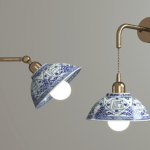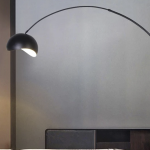Introduction
For hundreds of years, people have used various types of lamps to light up their homes and places of work. However, in recent times, there has been a shift towards more sustainable and environmentally friendly sources of light. One such invention is the fat lamp, which is gaining popularity in various parts of the world. In this article, we will explore the history, development, and benefits of the innovative fat lamp.
What is a Fat Lamp?
A fat lamp is a type of lamp that uses animal fat or vegetable oil as fuel. It has a long history and was used extensively in the past when electricity was not available. It was commonly used for lighting in homes, churches, and other public places. The design of the fat lamp is simple; it consists of a container that holds the fuel, a wick, and a chimney.
The History of the Fat Lamp
The history of the fat lamp dates back to ancient civilizations such as the Egyptians, Greeks, and Romans. They used lamps made from clay, stone, and bronze, which were fueled by animal fat or vegetable oil. Later on, in the Middle Ages, lamps made from glass were invented, which provided a better quality of light.
During the 18th century, new innovations were made to the traditional fat lamp design. The introduction of the Argand lamp, which featured a cylindrical wick, allowed for more efficient burning of the fuel. In the early 19th century, the kerosene lamp became popular, which eventually led to the decline of the fat lamp.
However, in recent years, there has been renewed interest in the use of fat lamps as a sustainable source of light. This is due to their many benefits, compared to other traditional forms of lighting.
The Benefits of Using a Fat Lamp
One of the main advantages of using a fat lamp is that it is environmentally friendly. Unlike the production and disposal of batteries for torches or other forms of lighting, there are no negative impacts on the environment from using a fat lamp. Since the fuel is renewable, it is also sustainable.
Another benefit of using a fat lamp is that it is cost-effective. The fuel is inexpensive and can be obtained easily by rendering animal fat or purchasing vegetable oil. This makes it an attractive option for people living in developing countries or those who wish to reduce their electricity bills.
Fat lamps are also versatile, as they can be used both indoors and outdoors. They are particularly useful during power outages or in emergency situations, providing a dependable source of light.
The Modern Fat Lamp
In recent times, there have been many innovations made to the traditional fat lamp design. Modern fat lamps come in different shapes and sizes, and they utilize a variety of fuels such as beeswax, olive oil, and soy wax. The materials used in their construction have also been updated, with some lamps being made from glass, wood or porcelain.
How to Use a Fat Lamp?
Using a fat lamp is very easy. Simply fill the container with the fuel, light the wick, and adjust the flame using the chimney. It is essential to keep the wick trimmed to ensure adequate burning, and the lamp should be used in a well-ventilated area.
Conclusion
The fat lamp is an innovative and sustainable source of lighting that has been used for centuries. Despite the availability of modern lighting solutions, fat lamps continue to be popular due to their many benefits. They are environmentally friendly, cost-effective, and versatile, and can be used in a variety of situations. If you are looking for a new way to light up your home or garden, the fat lamp may be worth exploring.






